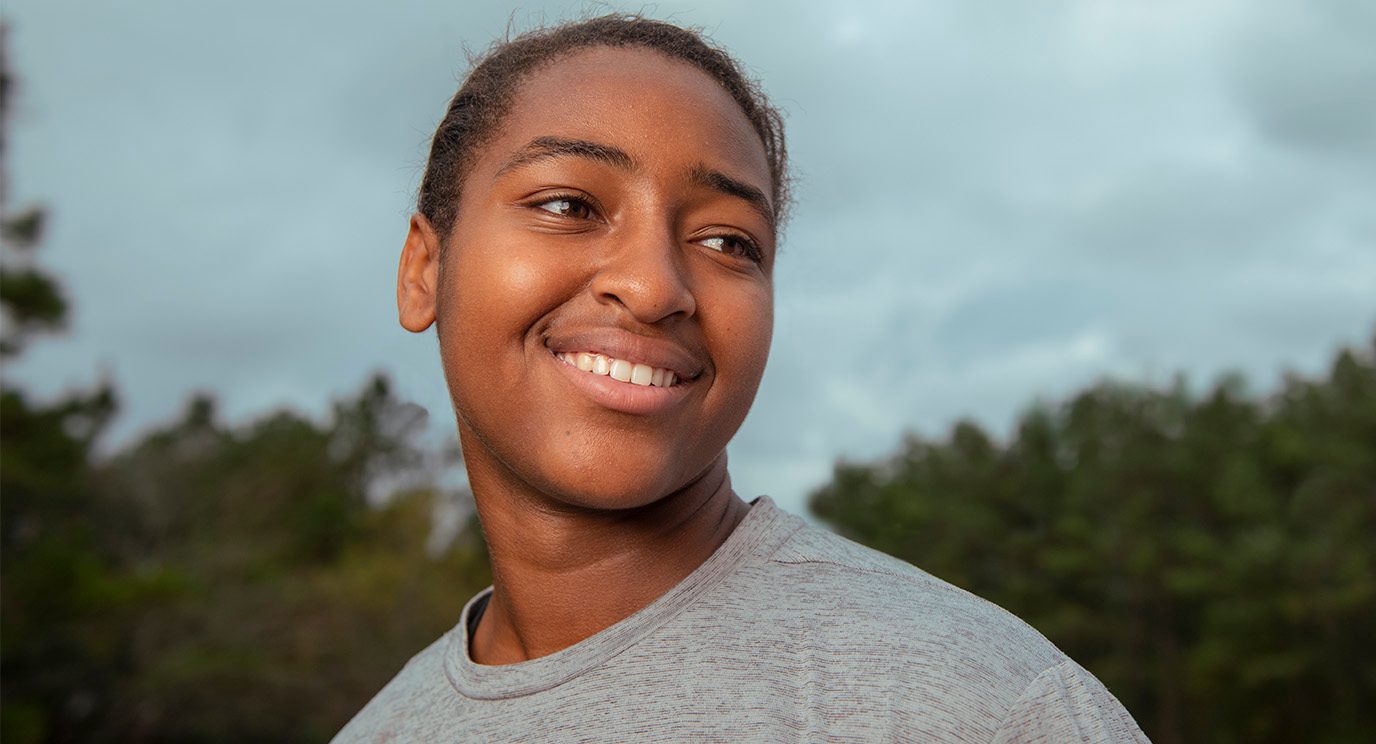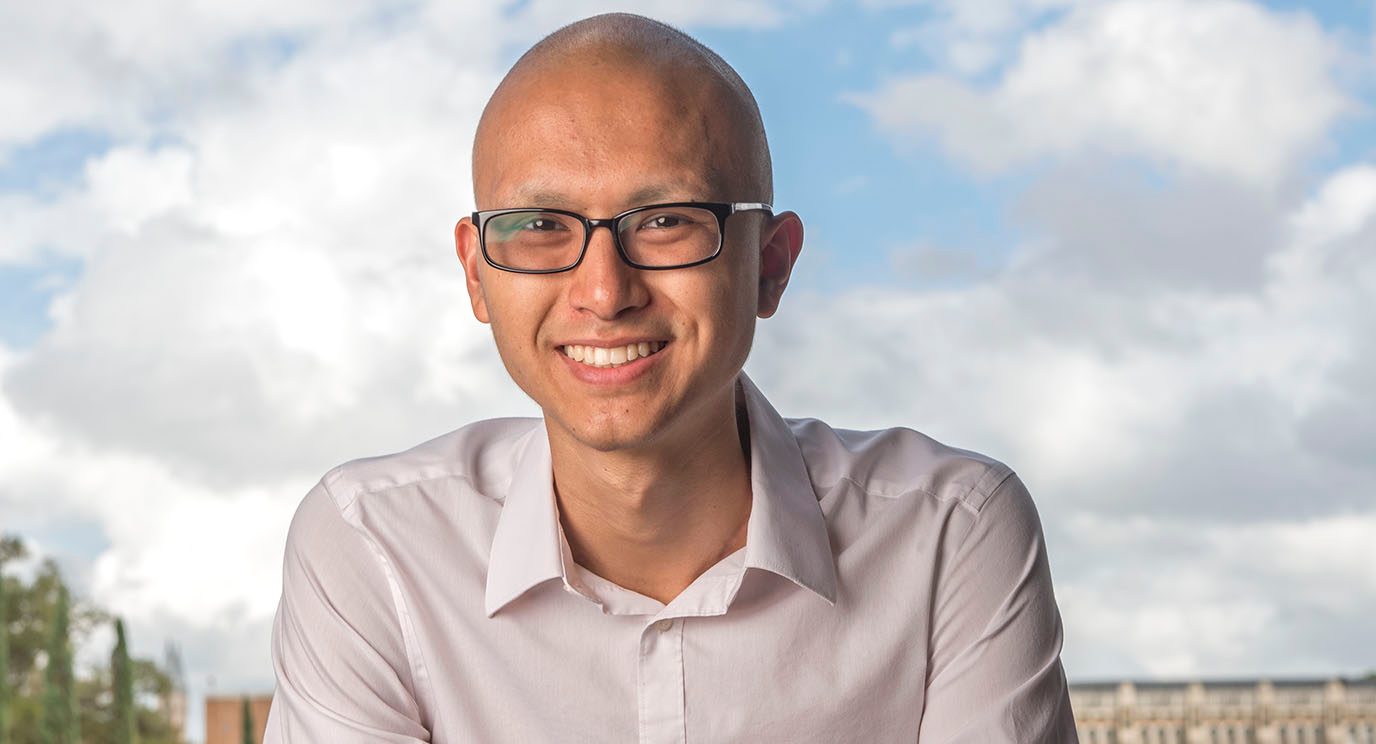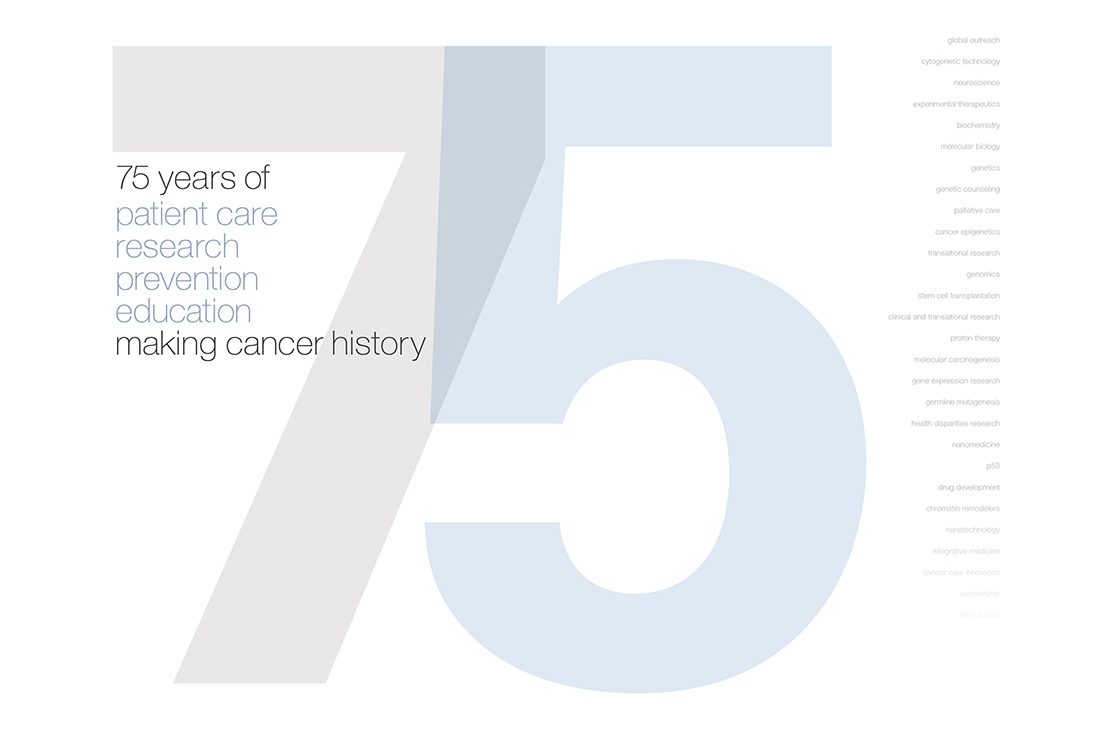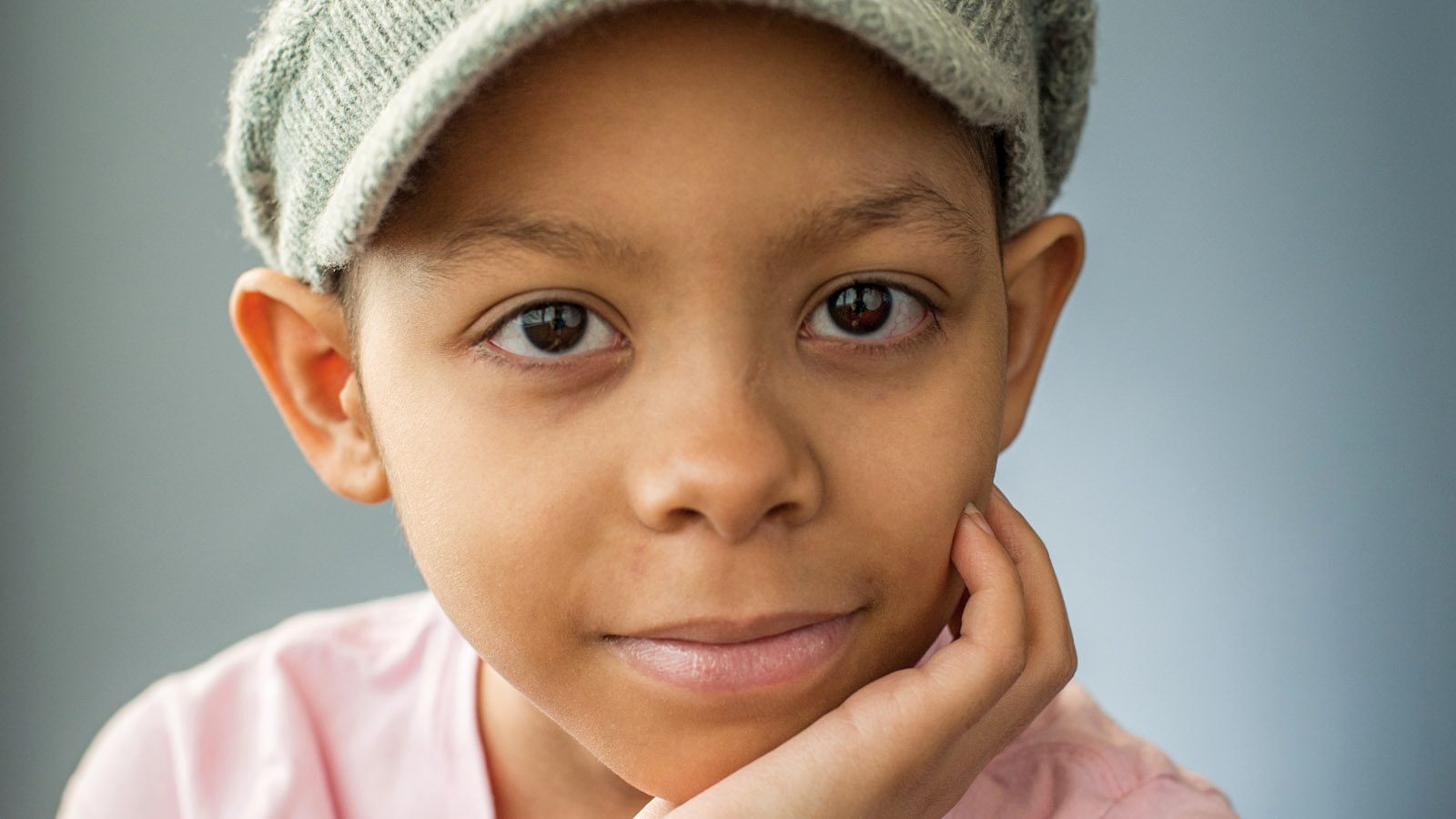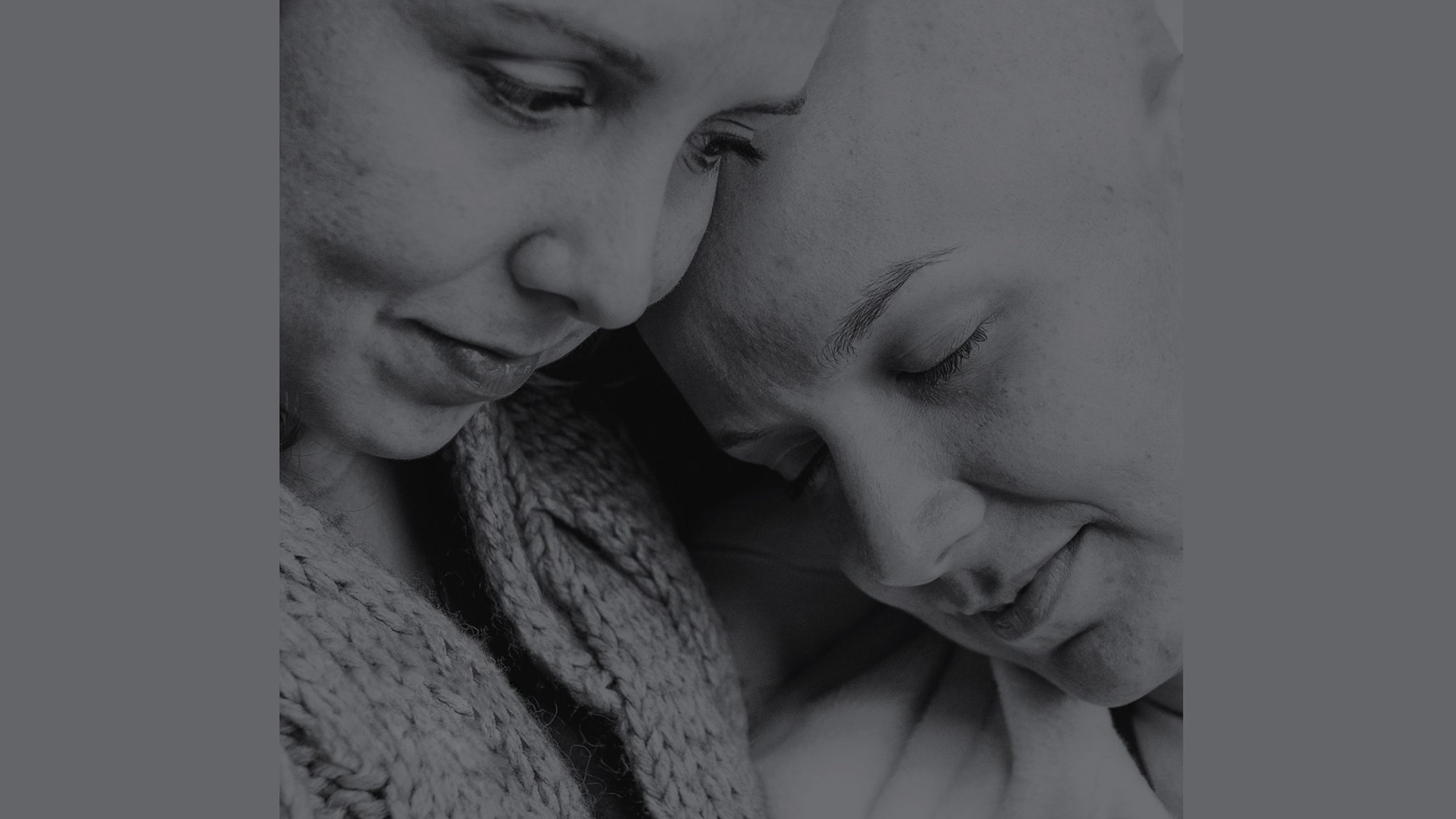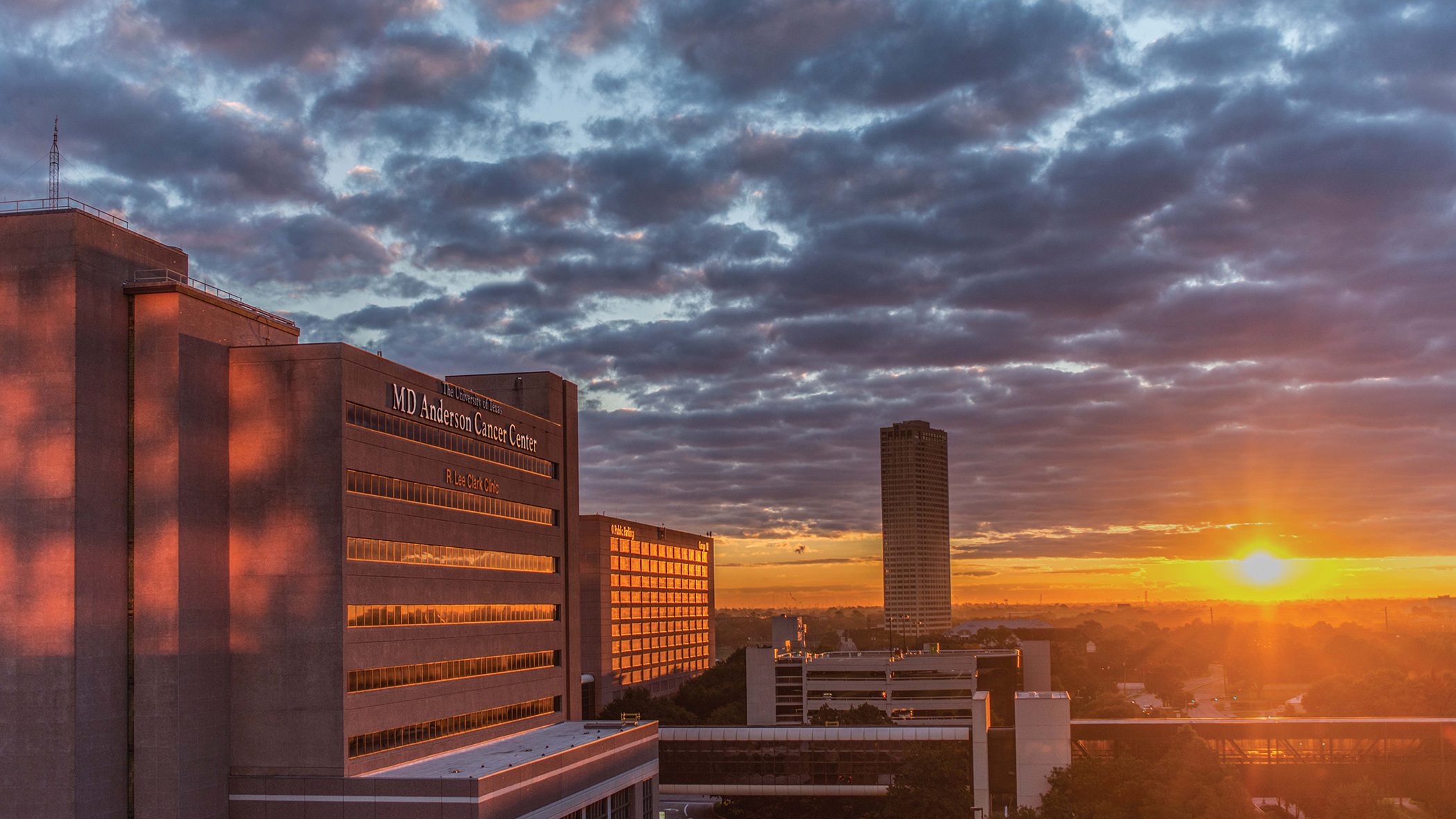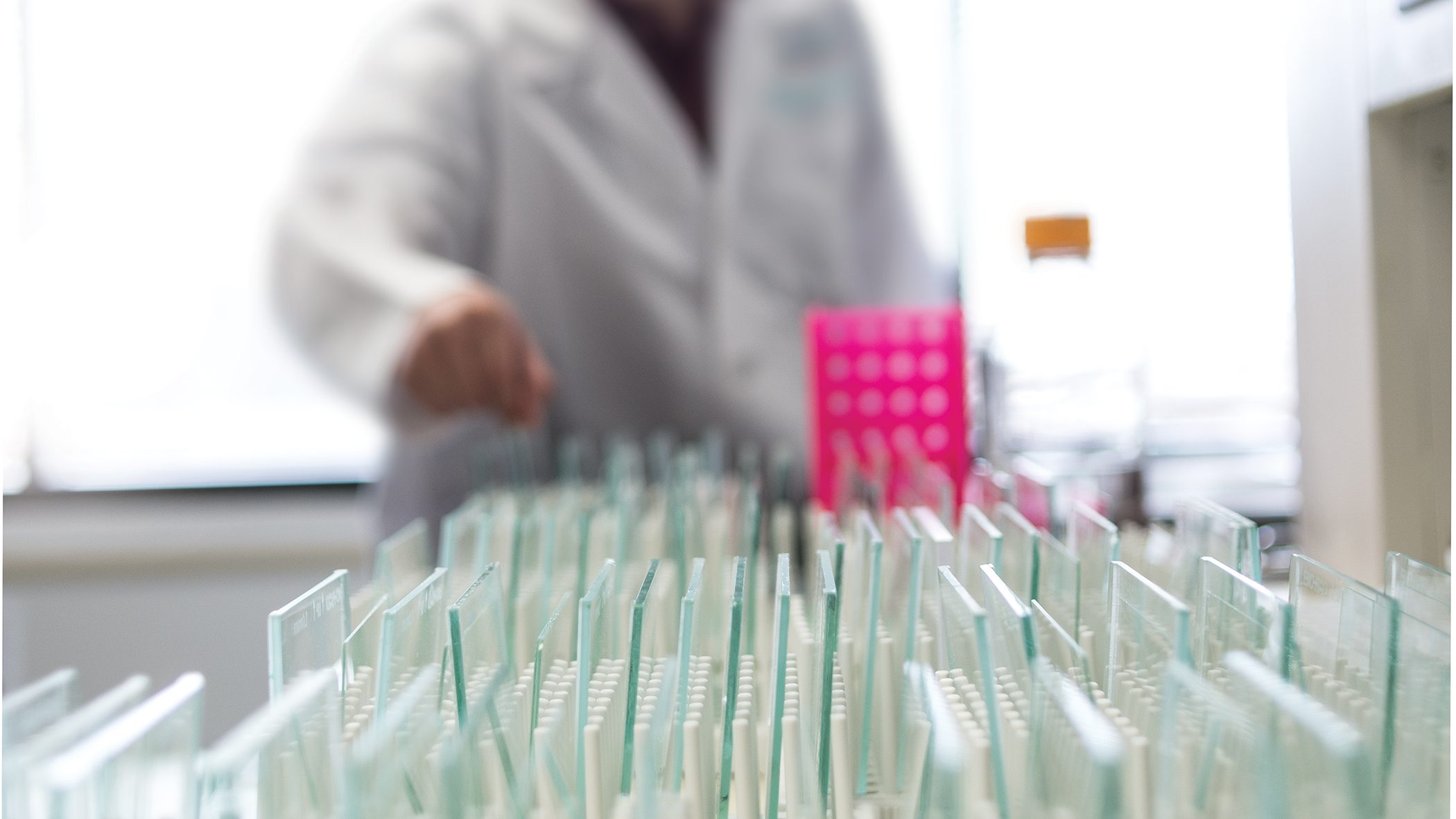Back in the game after a brain tumor in the bladder

Annual Report 2011
MD Anderson Cancer Center's 2010-2011 Annual Report highlights achievements and contributions of faculty, staff, volunteers and donors in advancing the diagnosis, treatment and prevention of cancer. It also provides key financial and statistical data.

New-generation research strives to achieve best value for cancer care
Ibi Opuiyo gives little credence to the word “unfixable.”
For the past 15 years, Bill Hyslop’s world has revolved around quality — and numbers.
“Do you smoke cigarettes now?” is an important question.
A youth symphony violinist, first-chair trumpet player in his high school band, varsity cross-country runner and stellar student with...
In 2004, James Yao, M.D., learned that one patient can open a whole new world of possibilities.
When Joseph Nates, M.D., joined MD Anderson’s faculty in 2002, he discovered a high incidence of ventilator-associated pneumonia.
As he ends each week traveling from Katy to the Bay Area to care for his patients, Richard Ehlers, M.D., never loses sight of his...
Reginald Munden, M.D., sees a light at the end of the tunnel with the release of the findings of the National Lung Screening Trial.
The mirror is not always a glowing reflection of one’s self. For Jason Cox, there was a point when he didn’t even recognize himself.
Breast Pathologist Aysegul Sahin, M.D., loves to share her knowledge and experiences with young people. The benefits are far from...
A Smoking Prevention Interactive Experience
After more than 15 years of submitting grants, Khandan Keyomarsi, Ph.D., knows what it takes to be successful. It’s this knowledge...
Cancer Prevention Researcher Lorna McNeill, Ph.D., has embarked on an important ministry.
Andria Schibler hopes the yeast she uses every day will do much more than make bread dough rise. Her ultimate goal is to help improve...
Facilities focus on meeting needs of patients, visitors, employees
The towering new building anchoring MD Anderson’s Mid Campus resembles a ship with its prow facing the Texas Medical Center.
It was all part of the initial plan. When architects, engineers and construction workers returned to
MD Anderson’s Alkek Hospital in...
Advances in cancer detection and treatment will materialize rapidly in the coming decade thanks to the convergence of genome analysis,...
If you had to design a space that appealed to a 5-year-old as well as a 25-year-old, what would it look like?
When it comes to philanthropy, there are myriad ways to make a difference.
He’s often on the golf course and you can find her riding a bike, but Twilight and Marc Freedman become a pair when they volunteer at...
MD Anderson meets and beats largest fundraising goal
In September 2010, Harry Longwell of Dallas wrestled with a problem many fundraisers would love to have.
Pennies on Monday, nickels on Tuesday, dimes on Wednesday, quarters on Thursday and counting on Friday.
Don’t underestimate college kids. Each summer, about 50 students from The University of Texas at Austin saddle bicycles and ride for...
Previous Issues
View archives

































